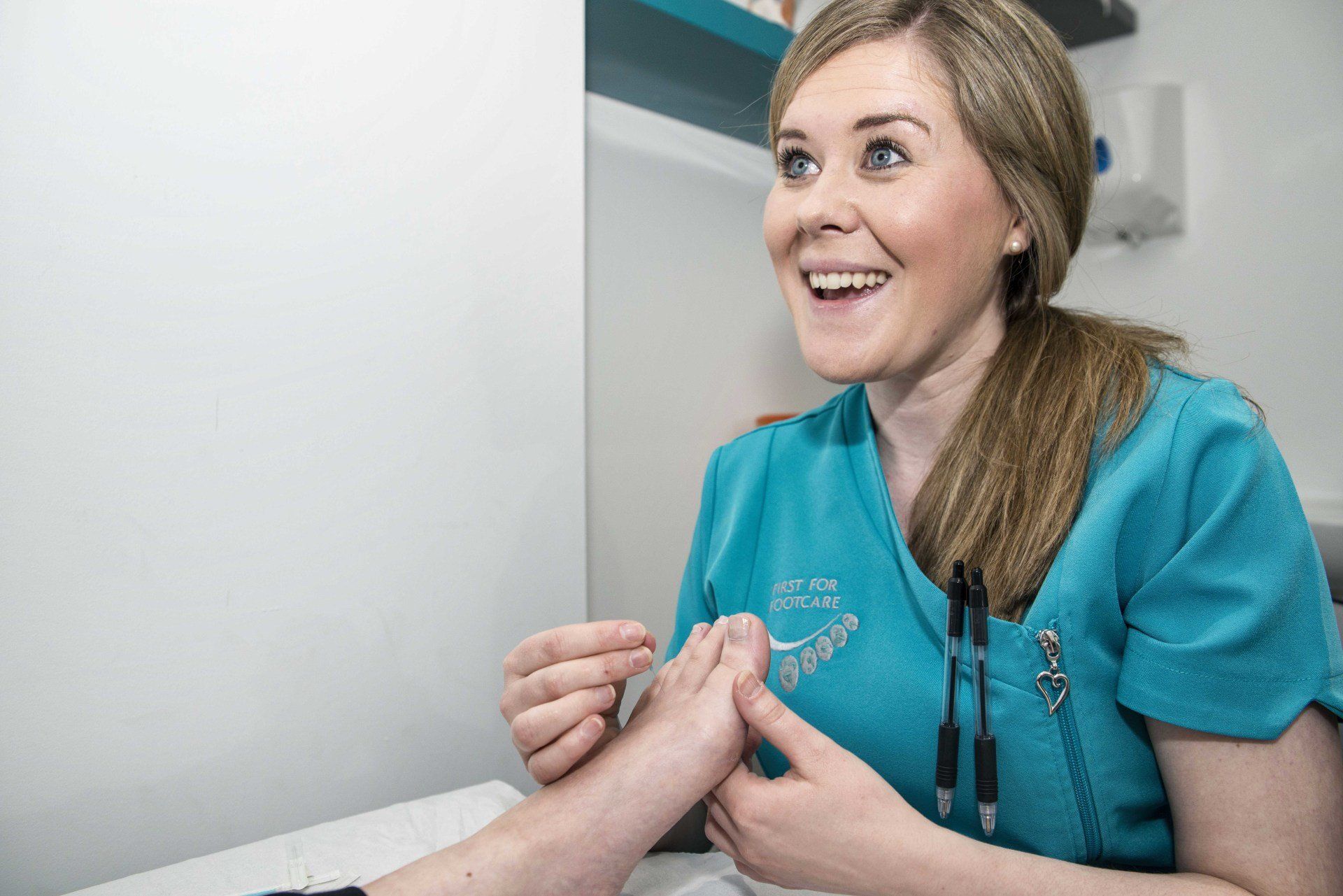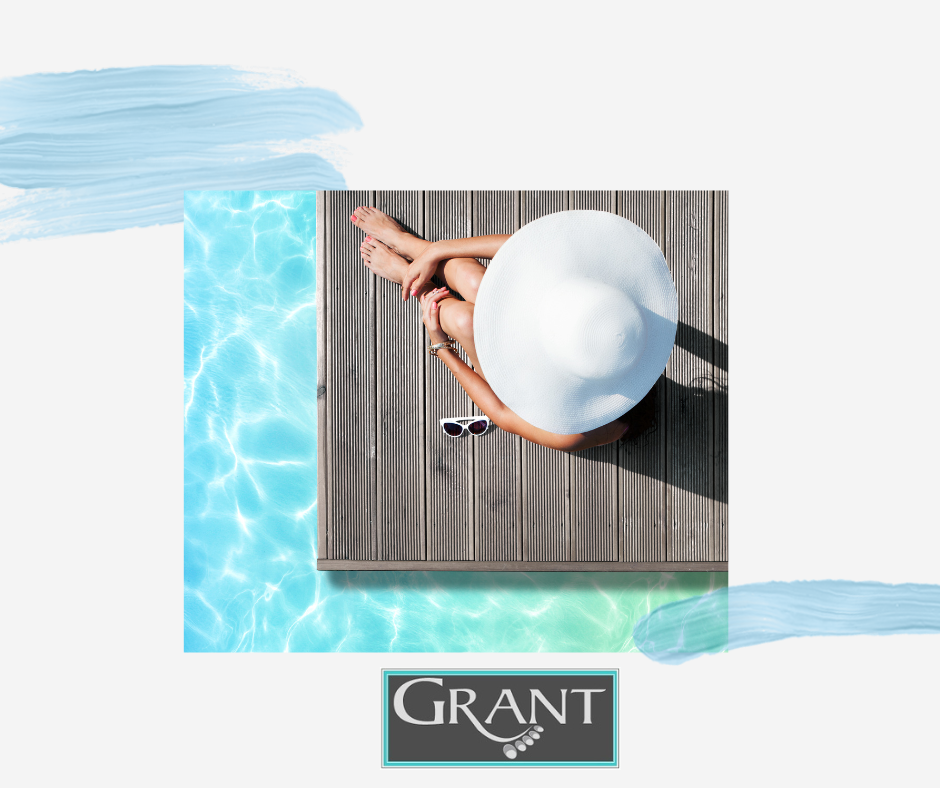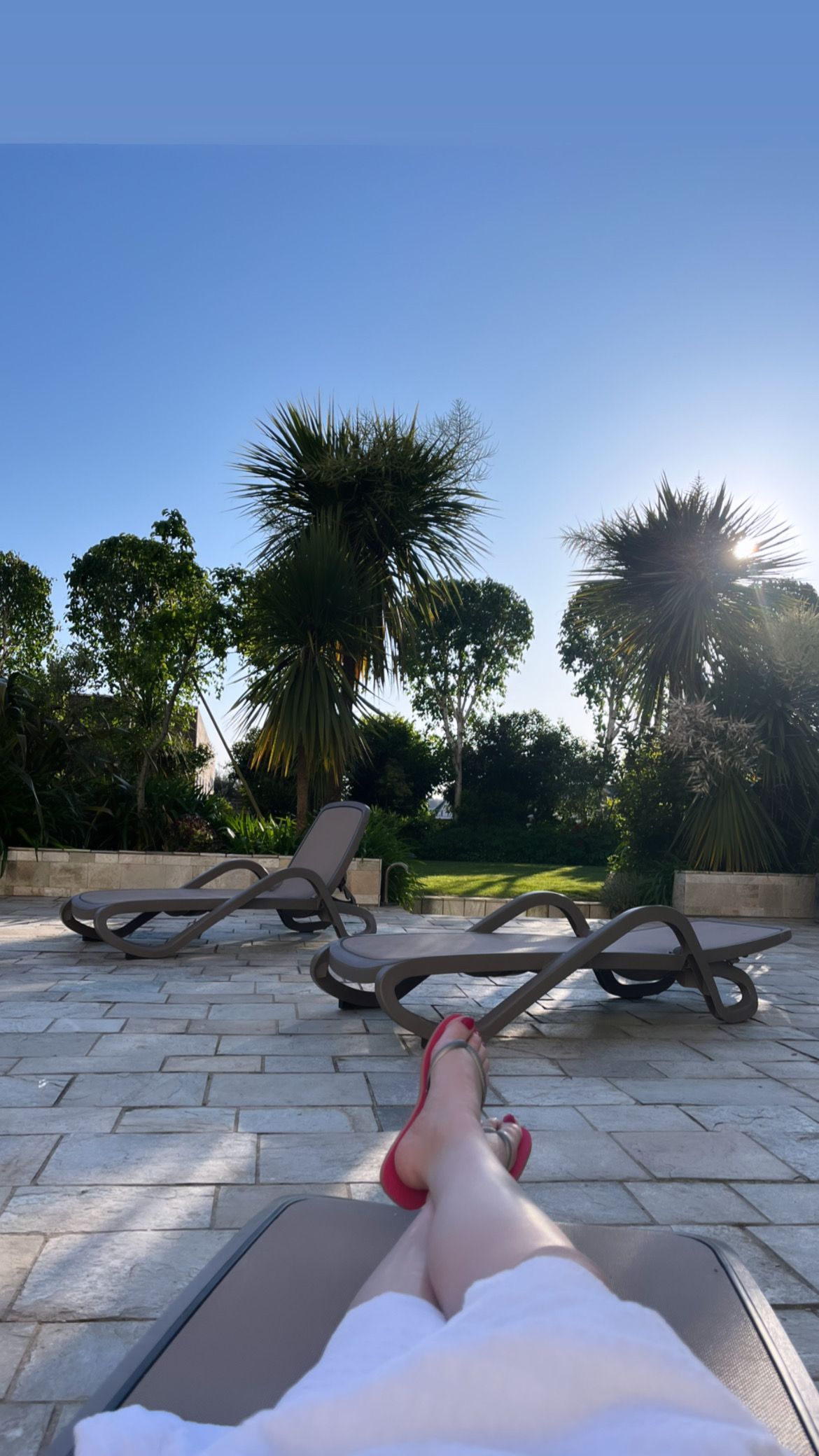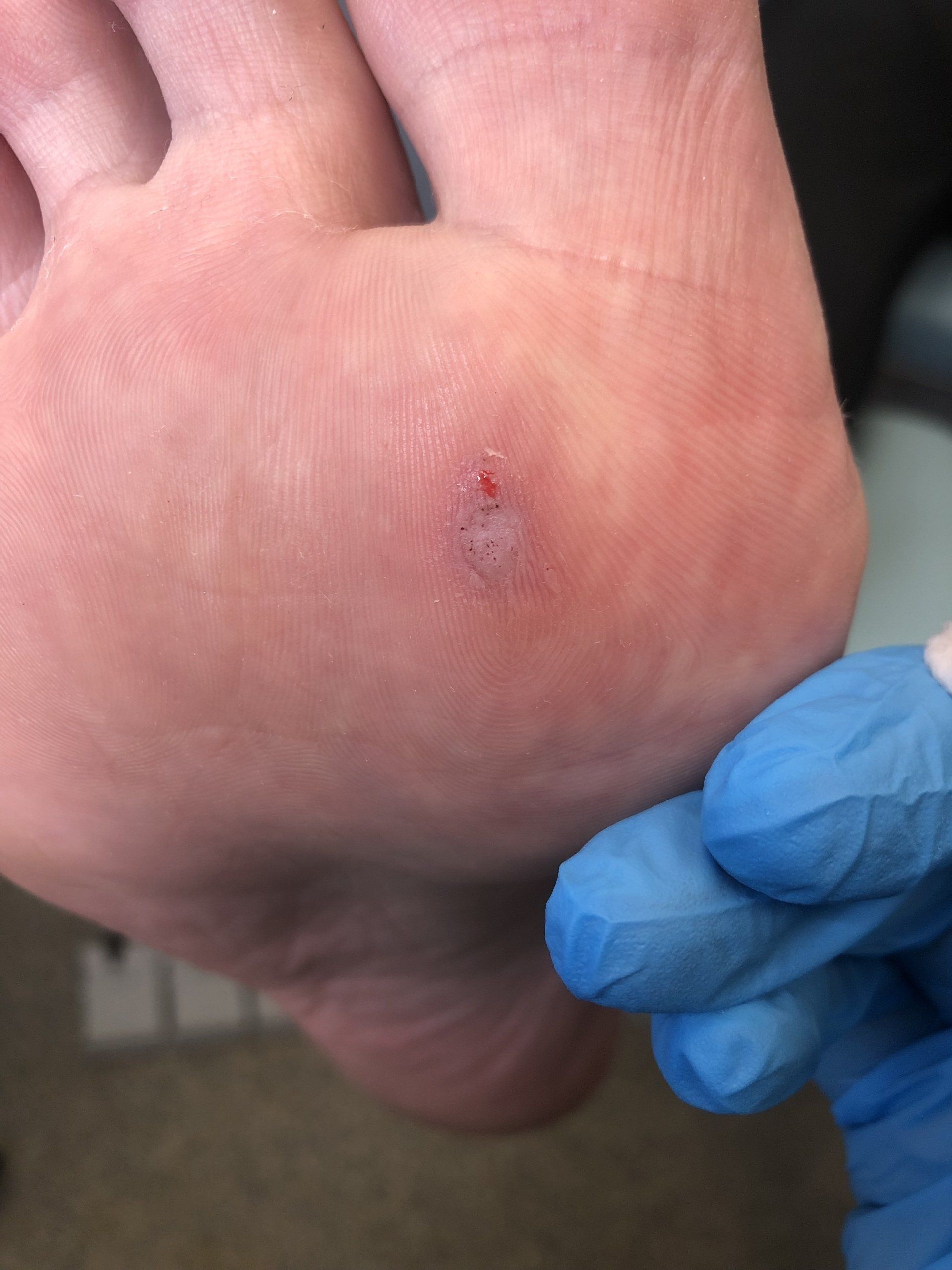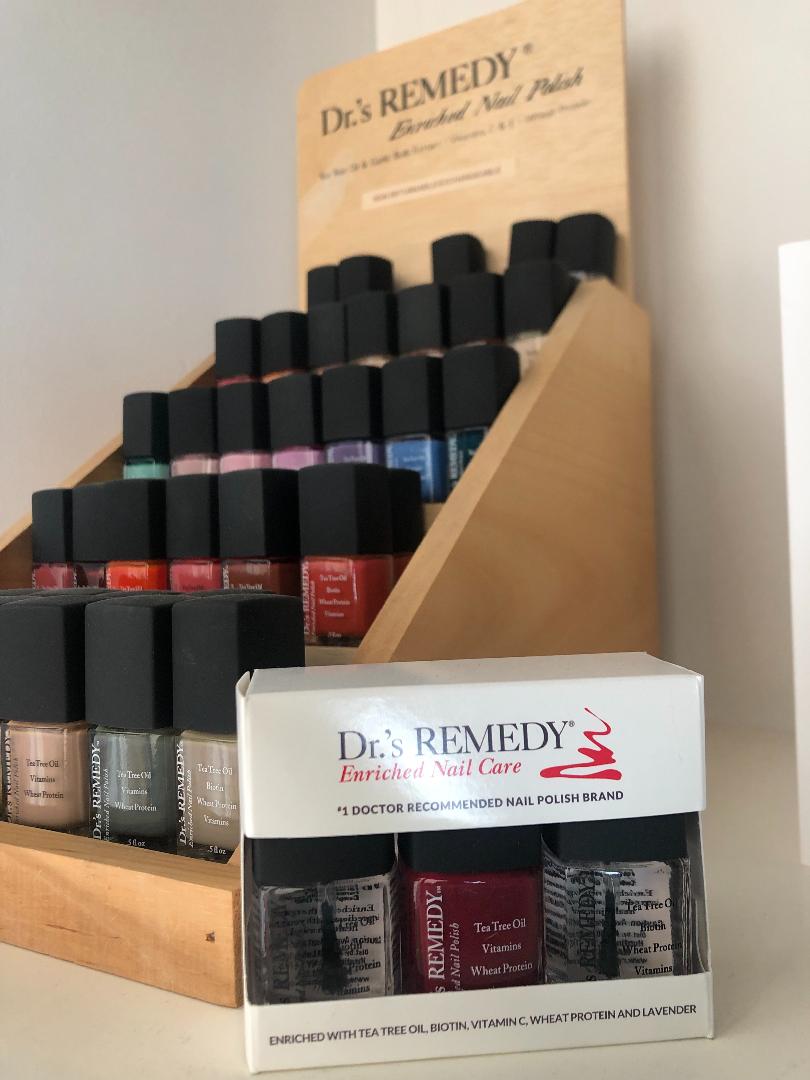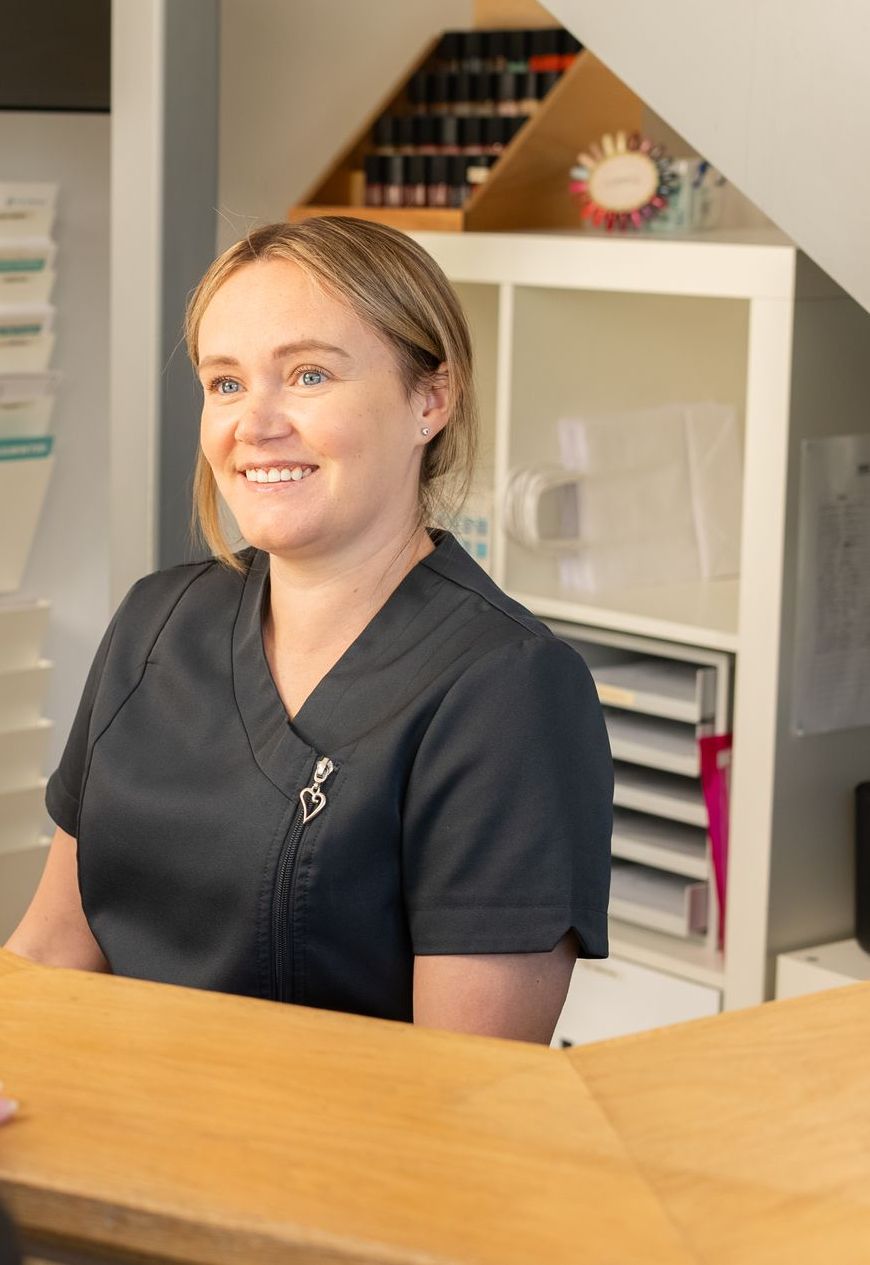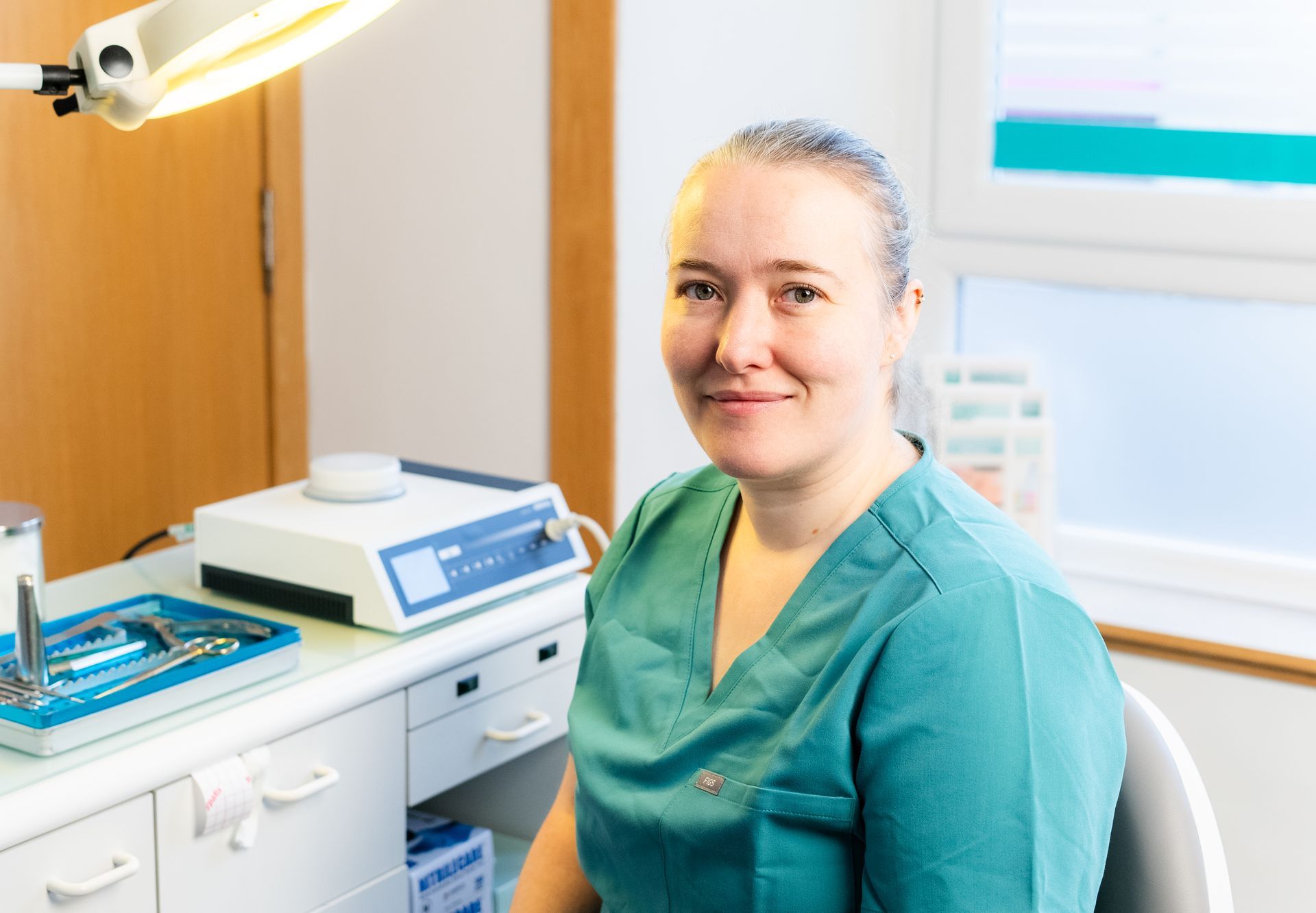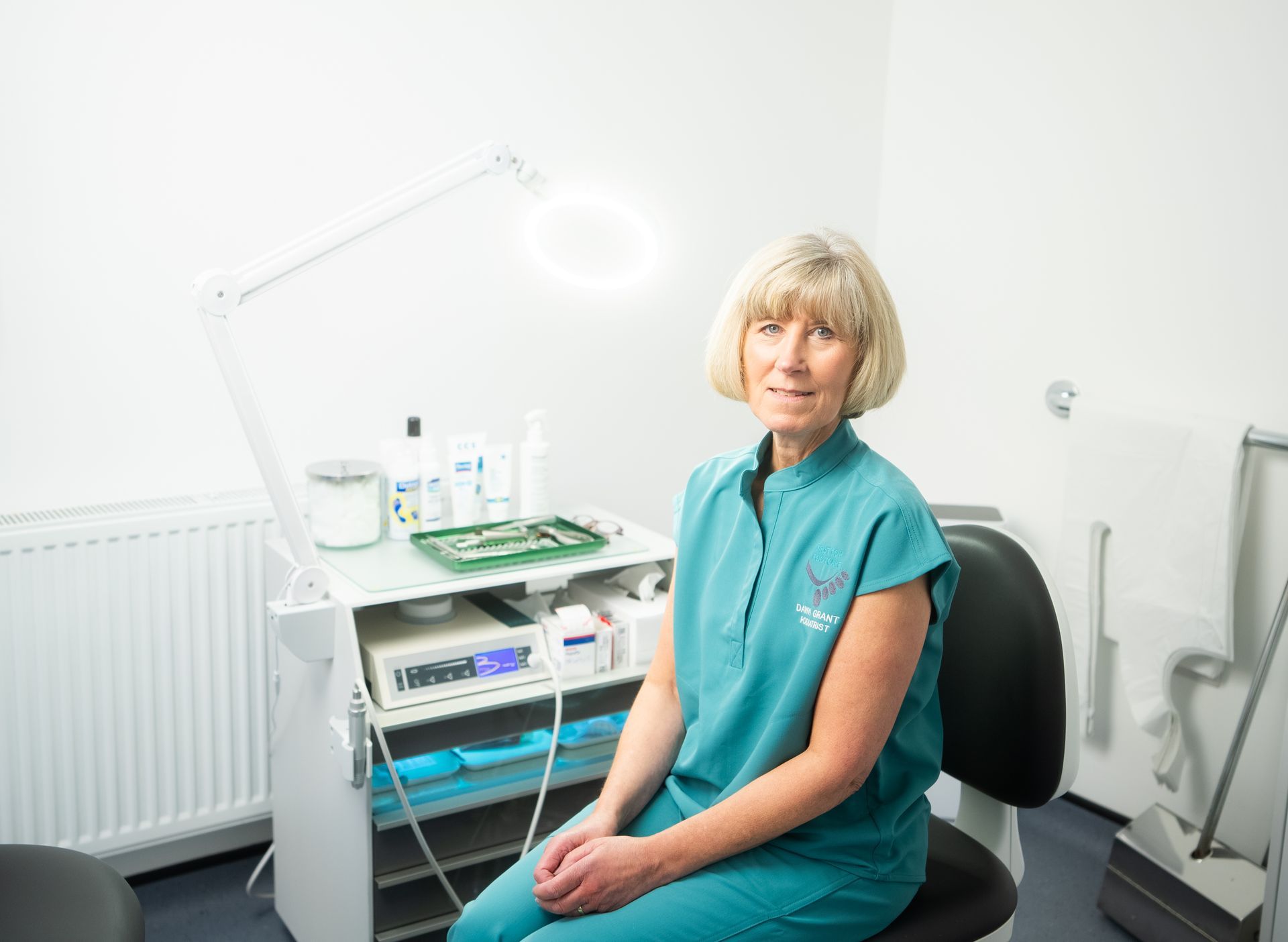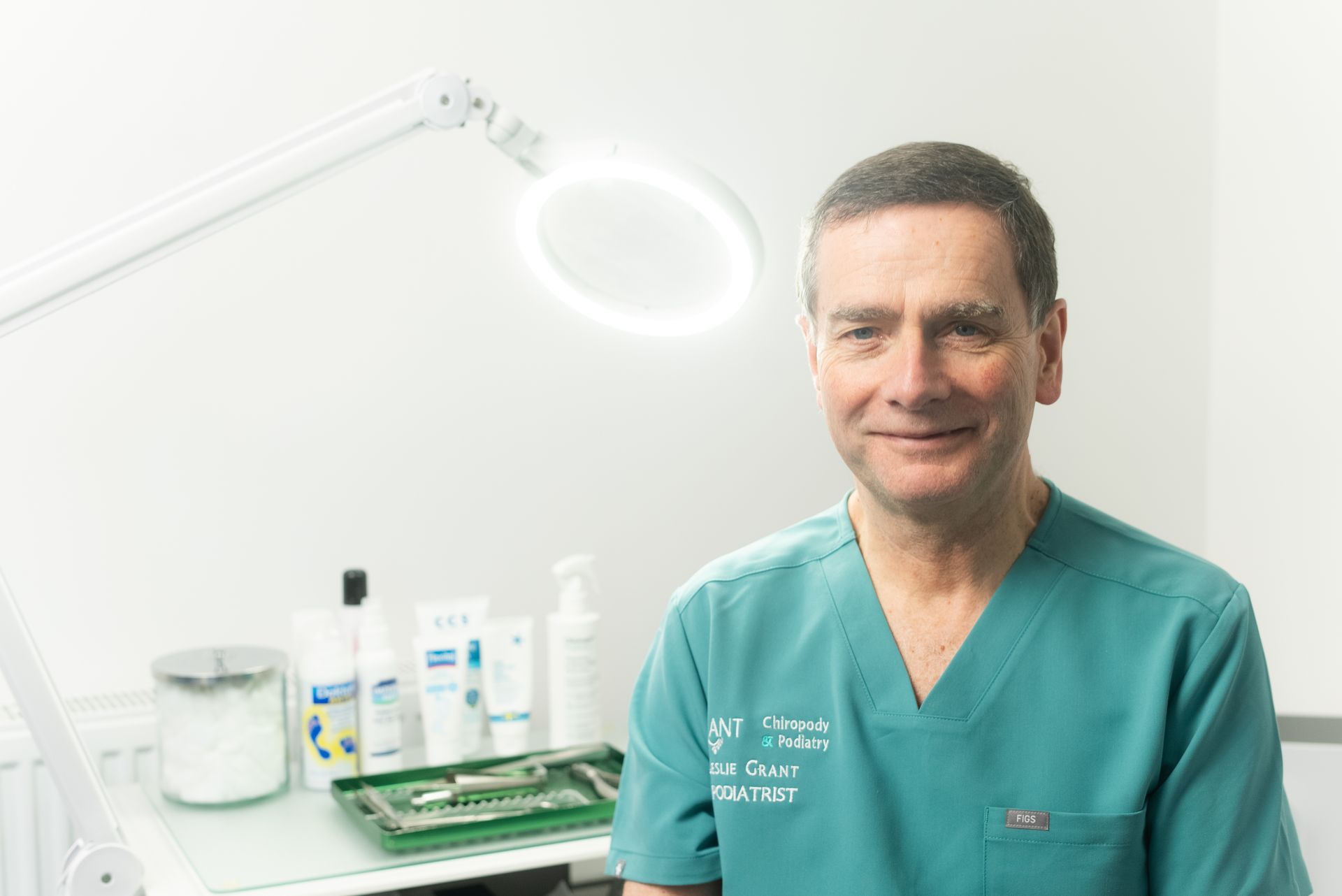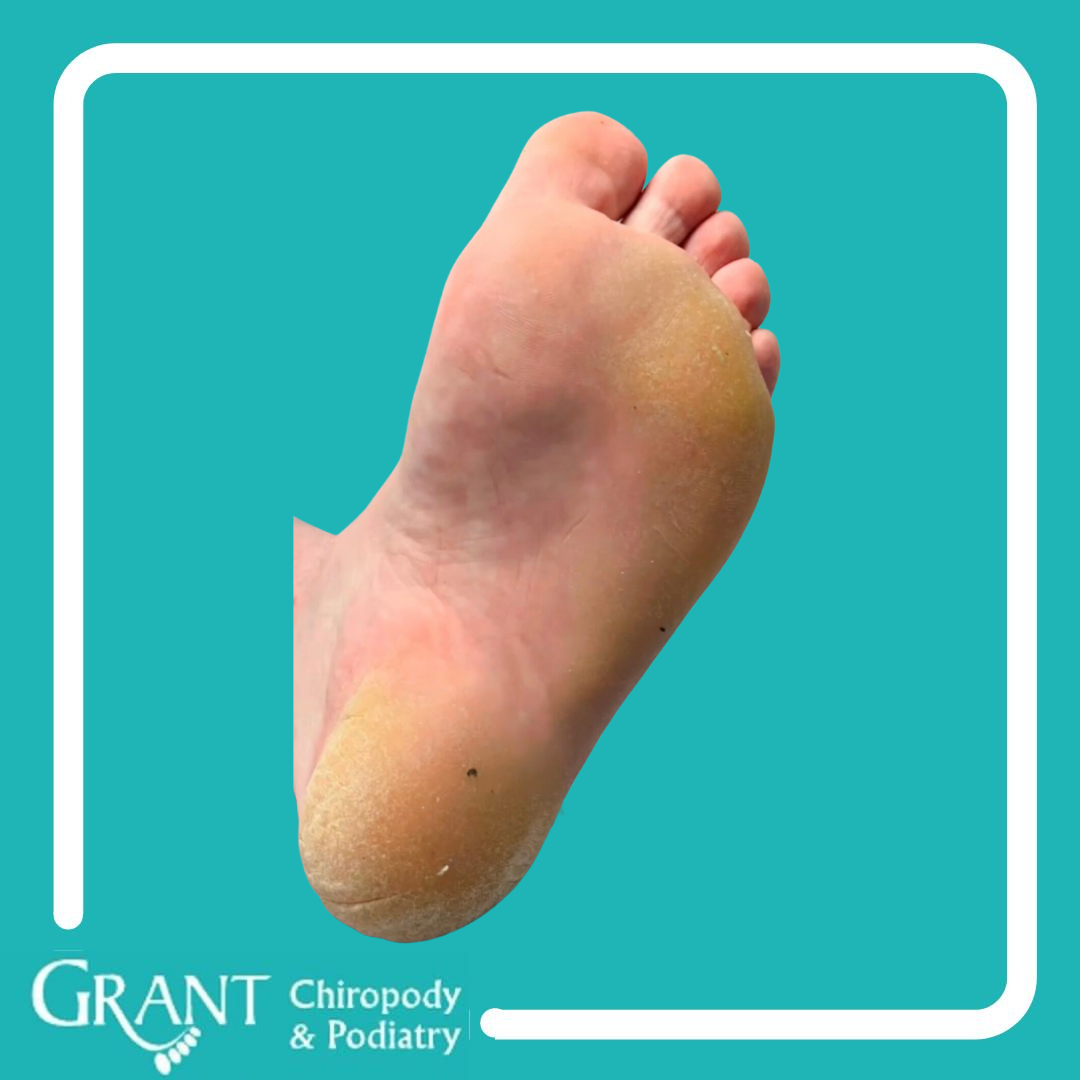So the Summer is here! The sun is out and it's time to reveal your feet to the World for the first time in several months.
It is not unusual to neglect your feet over the colder months, it doesn't help that they are wrapped up in socks and shoes.
It is important to be checking your feet regularly in and take care of them all year round but particularly in the warmer weather when they are more exposed.
This blog post will cover some of the issues we see regularly during the summer months in our clinics as well as some helpful tips to taking care of your feet.
Footwear
As it get warmer our winter boots and thick socks become too much for our feet. It's time pull out the lighter footwear with the sandals and flip flops. With this, people often
find a shift in their gait and a difference in how their feet feel, this is due
to a change in footwear.
When feet have been comfortably supported in good
fitting shoes for the majority of the year, they often feel unsupported during summer
when sandals and flip flops are the shoes of choice. However, there are some new sandals that provide that additional arch support, with a traditional anatomical footbed. We have just started stocking Archies in clinic. Archies were designed in Australia by a physiotherapist, looking to give his patients some added support in their flip flops. If you are interested in Archies, why not ask one of the team in clinic for some advice. We would be happy to order in your preferred size or colour for you. If flip flops are not for you, our podiatrists are also able to give you tailored advice on lighter summer footwear. If you would like to make an appointment we would be happy to assess your foot shape and size, to give you a more personal recommendation.
Always remember that your feet do swell in the heat, so allow extra space for them to have plenty room to do this.
Dry and Hard Skin
Hard skin (known as callous) can form around the heels to create an extra padded and protective area which is missing when summer footwear is worn. Hard skin around the toes can also occur due to the toes curling to grip the shoes, to give more support and stability. Excessive rubbing and movement can also create high friction areas that can produce corns and blisters.
Here in our clinic, we can provide appointments to reduce the hard skin on your feet as well as removing any corns. It is important to see a professional to have your feet done as this prevents any damage occurring.
We also have a blog dedicated to dry and hard skin and how to prevent it, follow this link for more information;
https://www.grantpodiatry.co.uk/cracked-heels
Blisters
Blisters can occur for many different reasons such as
footwear and increased activity. By figuring out what is
causing your blisters, this will allow you to alter and protect the skin that
is affected by the friction. Blisters can be caused by subjecting your feet to extreme temperatures for example walking on hot sand or tiles around a pool.
The best way to prevent a blister is try to keep the feet covered when walking on hot surfaces. Try not to walk barefoot where possible to protect the delicate skin on your feet.
If a blister does occur, it can be very tempting to de-roof it. However this, can cause a lot of damage by creating an entry site for
infection if the blister no longer has a protective roof to keep it sterile. On
average blisters can take 3 to 4 days to reduce in pain level and around a week
to heal. Wash your feet in a warm salt foot bath to cleanse them in the evening
or after a long walk. If the blister roof has torn, this is where a hydro-colloid
plaster such as a compeed may be used to reduce any further damage to the underlying
skin. Be careful with these plasters as they can damage the healthy surrounding skin.
If you are suffering from some severe blisters that require
treatment, please do not hesitate to contact the clinic and book in with one of
our podiatrists who will be able to provide safe and sterile treatment.
Verruca
The ideal conditions for a verruca to occur is warm and
moist, a concept our feet will often recognise during the warmer summer months.
This is a time when communal swimming and leisure activity increase and in turn
can cause an increase in verruca appearances, especially in children. Wearing flip flips or shoes in a shared area will help protect your feet from coming into contact with verrucas in shared areas.
As podiatrists we
have an increased scope in treating verrucae with many different treatment
options too suit all verruca sizes and occurrences. If you are struggling with a
verruca and have tried over the counter treatments, give our clinic a call and
make an appointment to be treated by one of our team.
We have several blogs on verrucae and their treatment on our blog page, if you want to read more.
Sean Urchins and Sting Rays
In our clinics, we often treat people suffering from painful
feet due to foreign bodies embedded into the skin. This can vary from animal
hairs, to glass and stones. However, during the summer season a common foreign
body can come from the sea; sea urchins. These little creatures are common
marine life related to the starfish and can often be mistaken for seashells and
rocks however, these small creatures can cause great pain and
discomfort in such a small area of the skin due to their spikes.
Sea Urchin spikes are not poisonous to humans; however, they
create a splinter wound which can become infected if not removed. If infected
these wounds can cause excessive pain and discomfort as well as potential
damage to the surrounding tissue and possibly bone.
Removing the spike promptly is very important but it is
important not to pick or pull at the spike to prevent it from breaking or
splintering in the skin. Vinegar can also help dissolve the spike and is recommend to soak the area or create a compress in conjunction with treatment. The spikes are gone once they are no longer visible and there are no black/grey marks present on the skin.
Seeking professional help is highly recommended as it can be
difficult to treat the sole of your feet yourself. A warm compress can help with pain and swelling. It is
important too that if the area becomes red, hot or swollen to seek immediate
medical attention as these are all signs of infection.
In our clinic we have the right tools to retrieve such small
spikes from the skin and dress the wound appropriately.
Sting Ray are also a common marine life that can cause
damage to the foot. When you are stung you will feel immediate pain, unlike a
sea urchin, sting ray bards are larger and more noticeable.
If the sting is superficial then you will be able to treat
it onsite. If the barb has punctured your throat, neck, abdomen, or
chest, or has pierced completely through part of your body, do not attempt to
remove it. Seek emergency medical attention immediately.
Otherwise, remain in the ocean and pull the barb out if you
can. Allow the salt water to clean the wound.
It is also advised to submerge the foot in warm
water to relive the pressure and reduce the sting. If like a sea urchin spike,
you are unable to remove the spike please seek professional help to prevent the
spike from splintering.
Fungal Infections
There is a type of fungus that live harmlessly on the skin called Dermatophytes. In a fungal infection these dermatophytes multiply if
the conditions for them to thrive are just right, causing a huge increase in
the incidence of this fungus.
Dermatophytes thrive in warm and moist conditions. In the summer there are many
causes for a fungal infection to occur such as, increase in temperature of feet
in shoes and nail trauma than can be caused by summer footwear to name only a
couple. This appears as a red, itchy rash most commonly on the soles of the feet or in-between the toes. It also appears in nails as yellow, brown, crumbly texture, with a musty smell.
We have a blog dedicated to
fungal nail infections, see here for more information. https://www.grantpodiatry.co.uk/fungal-infections
We can also test nails if you are
unsure if it is fungal or not.We have more information about this in the following blog. https://www.grantpodiatry.co.uk/fungal-nail-testing-service
Any concerns about how to treat a
fungal nail, please do not hesitate to contact the clinic and book an
appointment with one of our podiatrists.
Nail Polish
In the Summer, it is more common
for people to have their feet in sandals and flip flops. With their feet
exposed, people often become self-conscious about how their feet look. Nail
polish is an easy way to make the feet look nicer as well as covering any problems
occurring in the nails such as a fungal infection. However, it is important to
remember that by covering the nails with nail polish will not fix the problem
and it is important to visit a podiatrist if any issues do occur.
Nail polish
can also weaken the nails causing the nail bed to lack oxygen and look pitted
due to the harsh chemicals in the polish. The nails will eventually recover and
strengthen over time if the nail is left without polish or a strengthening nail
conditioner is used. Nail pitting is very common with those who receive Gel or
Acrylic polish treatment regularly and is important for these people to take
regular breaks from these treatments to prevent excessive weakening of the nail
bed.
Here, at Grant Chiropody and
Podiatry we supply Dr Remedy nail polishes. Dr Remedies are full of natural Vitamins C & E, Wheat protein and Tea tree oil. They lack the harsh chemicals such as formaldehyde, that are present in everyday nail polishes, keeping the
nails strong and lessen the damage.
If you would like to see the range we
offer, come and visit our Falkirk clinic and give them a try.
Sun Cream
Lastly, it is important to apply sun cream to your feet while on
holiday even when wearing sandals and flip flops.
It is
a painful experience when feet become burnt due to the area being very
sensitive, the initial burning can cause extreme pain in an instant and stop
anyone from enjoying their holiday. It can also cause secondary damage such as
blistering and permanent sun damage.
The damage caused when skin becomes burnt
is extensive whether it be on your foot or another part of your body, this can
cause deep set damage that can last a lifetime. This is why it is important to
remember that UVA and UVB protection from sun cream is essential when exposed
to the sun.
The following blog gives us more information about sun damage and how to avoid it;
https://www.grantpodiatry.co.uk/skin-cancer-awareness-monthAs podiatrists, if anyone is suffering from painful blisters
occurring from sunburn we are able to help to keep the healthy skin maintained
as well as well as making any painful areas more comfortable with suitable
padding. If you do suffer any sun burn or blistering on your feet please do not
hesitate to book an appointment with one of our clinicians for treatment.
Don't let discomfort or pain in your feet stop you from having a fantastic summer. If you have any questions or queries, please to not hesitate to get in touch on 01324 621809.
